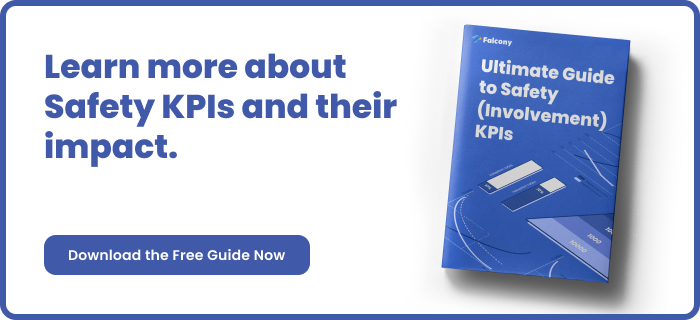The Good, the Bad and the Ugly Ways of Managing Safety Incidents
In the previous blog, we discussed the importance of reporting safety incidents and how it can contribute to a safer and more efficient workplace.
However, reporting an incident is just the first step in the safety management process. The way an organisation manages, investigates, and addresses incidents can significantly impact the effectiveness of its safety efforts. In this blog, we will explore the good, the bad, and the ugly ways of managing safety incidents and their long-term implications for the workplace.
The Good: Best Practices for Managing Safety Incidents
Effective management of safety incidents can create a culture of accountability, learning, and continuous improvement. When safety incidents are handled properly, organisations can not only prevent similar incidents from occurring but also build a stronger safety culture. Here are some of the best practices for managing safety incidents:
Timely and Thorough Investigation
One of the hallmarks of good safety incident management is conducting a thorough and timely investigation. As soon as an incident occurs, it is crucial to understand the root cause, not just the immediate cause. By identifying systemic issues, such as gaps in safety procedures, inadequate training, or faulty equipment, organisations can implement corrective measures that address the underlying causes. A comprehensive investigation that involves key stakeholders ensures that all aspects of the incident are understood and addressed.
Clear Communication and Reporting Channels
Good communication is essential when managing safety incidents. Employees should feel confident in reporting incidents, and the organisation should provide clear, accessible reporting channels. Once an incident is reported, it’s crucial that there is a clear process for communicating findings, corrective actions, and any changes to safety procedures. Transparency in the process helps to build trust and ensures that lessons learned are shared across the organisation.
Corrective and Preventative Actions
Once the investigation is complete, the organisation should focus on implementing corrective and preventative actions (CAPA). These actions aim to eliminate or reduce the risk of similar incidents occurring in the future. Whether it’s updating safety protocols, retraining staff, or introducing new safety equipment, these measures demonstrate a commitment to continuous improvement. The key to success is ensuring that corrective actions are not just temporary fixes but part of a long-term strategy for safety enhancement.
Employee Involvement and Ownership
A good safety incident management system actively involves employees in the process. This includes encouraging them to report incidents, contribute to investigations, and participate in the development of solutions. When employees feel that they have a stake in the safety process, they are more likely to take ownership of safety practices and contribute to a culture of shared responsibility. Empowering employees to make safety decisions can lead to better outcomes and greater involvement in maintaining a safe work environment.
The Bad: Missteps in Safety Incident Management
While organisations can implement effective practices for managing safety incidents, there are common missteps that can undermine the process and reduce its impact. These mistakes can lead to recurring incidents, decreased employee morale, and increased safety risks. Here are some of the "bad" ways of managing safety incidents:
Lack of Proper Investigation
Failing to thoroughly investigate incidents or only addressing the immediate causes rather than underlying issues is a common mistake. Without a full investigation, organisations miss the opportunity to identify systemic problems that could lead to future incidents. A shallow investigation can lead to repeated incidents, lower safety standards, and an erosion of trust among employees who feel that their concerns are not taken seriously.
Ignoring or Minimising Minor Incidents
Some organisations may view minor incidents or near-misses as unimportant or something that doesn’t require significant attention. However, ignoring or minimising these incidents is a dangerous approach. Small incidents often serve as early warning signs for larger, more serious accidents. By dismissing them, organisations may miss the opportunity to address issues before they escalate, potentially putting employees at greater risk.
Inadequate Follow-Up
After an incident is reported and investigated, failing to implement effective follow-up can severely hinder the safety management process. Without follow-up, corrective actions may not be fully implemented, or they may be ineffective. Additionally, organisations may fail to assess the long-term effectiveness of these measures. A lack of follow-up can lead to complacency, allowing safety issues to persist or resurface, which can compromise employee well-being and the company’s reputation.
Poor Communication and Transparency
When there is a lack of clear communication during or after a safety incident, employees may feel uncertain about what happened and why certain actions were taken. This lack of transparency can create confusion, erode trust, and lead to frustration among workers. Furthermore, if corrective actions are not communicated effectively, employees may not understand the changes made or the reasons behind them, undermining the success of the safety measures.
The Ugly: Dangerous Ways of Managing Safety Incidents
The most harmful approaches to managing safety incidents are not only ineffective but can also create a toxic workplace culture that jeopardises the safety and well-being of employees. These “ugly” practices can have serious consequences for both the organisation and its workforce. Here are some of the worst ways to handle safety incidents:
Blame and Punishment Culture
A blame and punishment culture can be one of the most destructive ways of managing safety incidents. When organisations focus on assigning blame rather than understanding the root causes, employees become reluctant to report incidents, fearing retaliation or disciplinary action. This creates a culture of fear, where issues are swept under the rug rather than addressed. The fear of punishment stifles open communication, hindering the organisation’s ability to learn from incidents and improve safety practices.
Failure to Report or Concealing Incidents
Some organisations may deliberately fail to report safety incidents or even attempt to conceal them to avoid negative publicity, financial penalties, or regulatory scrutiny. This unethical practice not only puts employees at risk but can also lead to severe legal and reputational consequences. Concealing incidents prevents the organisation from learning from them, leaving hazards unaddressed and employees exposed to potential harm.
Lack of Resources for Safety Management
Another ugly practice is neglecting to allocate adequate resources for safety incident management. Without proper funding, training, or personnel dedicated to managing safety, organisations struggle to address safety concerns effectively. This leads to a reactive approach to safety, rather than a proactive one. Inadequate resources can result in poorly managed investigations, ineffective corrective actions, and a lack of continuous improvement, all of which compromise workplace safety.
Failure to Learn from Past Incidents
When organisations fail to learn from previous incidents and continuously repeat the same mistakes, the consequences can be catastrophic. Ignoring lessons learned from past incidents or failing to update safety protocols accordingly is a dangerous approach. It signals to employees that safety is not a priority and that their well-being is not valued. The lack of a commitment to improvement can lead to preventable accidents and a decline in workplace morale.
Conclusion
The way an organisation manages safety incidents has a significant impact on its overall safety culture and long-term success. By embracing best practices, such as thorough investigations, clear communication, and employee involvement, businesses can foster a safe work environment and continuously improve their safety standards. Conversely, missteps like inadequate follow-up, poor communication, and the failure to address systemic issues can hinder safety efforts and increase risks. At the extreme, dangerous practices such as a blame culture, failing to report incidents, and inadequate resources can have severe consequences for both employees and the organisation as a whole.
To create a safer, more productive workplace, it is essential to learn from both the good and the bad, avoiding the ugly approaches and adopting a commitment to safety that is embedded in the organisation’s culture.
If you're looking for a platform to manage any and all types of risks, we've got you covered. Falcony | Risks is easy-to-use, boosts two-way communication, has customisable workflows, automated analytics, vast integration possibilities and more. Start your 30-day trial or Contact us for more information:
We are building the world's first operational involvement platform. Our mission is to make the process of finding, sharing, fixing and learning from issues and observations as easy as thinking about them and as rewarding as being remembered for them.
By doing this, we are making work more meaningful for all parties involved.
More information at falcony.io.

Related posts
Cognitive Dissonance - How management may not accept the truth of Safety Incidents
In the realm of workplace safety, acknowledging the occurrence of safety incidents is a crucial...
Why Do We Report Safety Incidents?
Reporting safety incidents is a fundamental practice in ensuring the health, safety, and well-being...
The good, the bad and the ugly ways of managing whistleblowing cases
Whistleblowing cases are a litmus test for an organization's ethical values, transparency, and...






